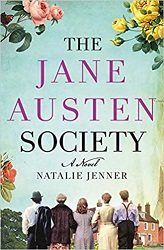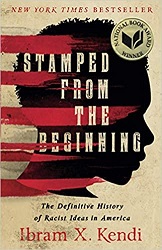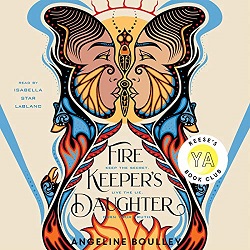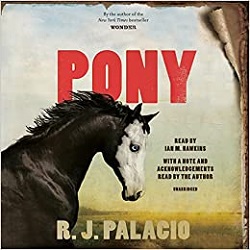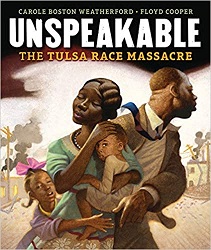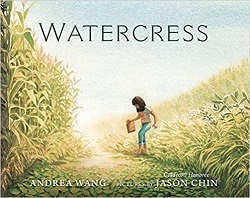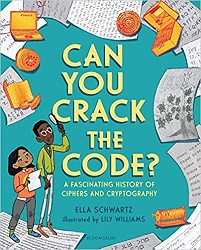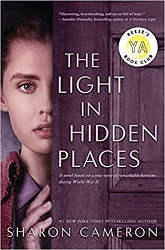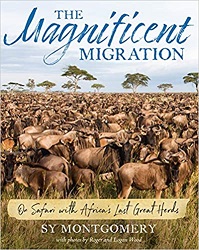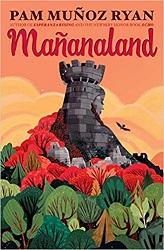2021 Sonderbooks Stand-outs!
 Another year of reading is finished! It’s time to choose my Sonderbooks Stand-outs for 2021!
Another year of reading is finished! It’s time to choose my Sonderbooks Stand-outs for 2021!
First, let me make it clear that I am *not* choosing based on literary merit. These lists are *not* predictions for any awards, and they are not chosen by committee. These lists are all about my personal favorites from the books I read this year. I might not have great reasons for my choices, and I try not to overthink when I choose them. These are books I read in 2021 that made me happy when I read them.
I don’t have the reviews of all of these books posted, but I will remedy that as soon as I can and add in the link here.
First, here are my reading stats this year:
Books reread: 6
Fiction for adults: 23
Nonfiction for adults: 24
Fiction for teens: 26
Fiction for children: 52
Nonfiction for children: 108
Picture books: 239
Interesting (to me) is that I read many more adult novels than in previous years — and fewer of almost everything else.
It’s always hard to narrow down my list of favorites, but here’s what I’ve come up with this year, the Sonderbooks Stand-outs of 2021:
Fiction
- The Jane Austen Society, by Natalie Jenner
- The Invisible Life of Addie LaRue, by V. E. Schwab
- A Deadly Education, by Naomi Novik
- Cloud Cuckoo Land, by Anthony Doerr
- The House in the Cerulean Sea, by T. J. Klune
- The Hidden Palace, by Helene Wecker
- The Jane Austen Project, by Kathleen A. Flynn
- This Is How It Always Is, by Laurie Frankel
- Longbourn, by Jo Baker
- The Last Graduate, by Naomi Novik
- Unmarriageable, by Soniah Kamal
- A Song of Flight, by Juliet Marillier
Nonfiction
- Stamped from the Beginning, by Ibram X. Kendi
- Intimate Conversations with the Divine, by Caroline Myss
- Every Thing Is Sacred, by Richard Rohr and Patrick Boland
- The Art of Bible Translation, by Robert Alter
- Two Trains Leave Paris, by Taylor Marie Frey & Mike Wesolowski
- Subpar Parks, by Amber Share
Teen Fiction
- Firekeeper’s Daughter, by Angeline Boulley
- The Girls I’ve Been, by Tess Sharpe
- How the King of Elfhame Learned to Hate Stories, by Holly Black
- Everything Sad Is Untrue, by Daniel Nayeri
- Blackout, by Dhonielle Clayton, Tiffany D. Jackson, Nic Stone, Angie Thomas, Ashley Woodfolk, and Nicola Yoon
- Winterkeep, by Kristin Cashore
- Beasts and Beauty, by Soman Chainani
- Terciel and Elinor, by Garth Nix
Children’s Fiction
- Pony, by R. J. Palacio
- Just Like That, by Gary D. Schmidt
- Amber & Clay, by Laura Amy Schlitz
- Long Road to the Circus, by Betsy Bird
- Starfish, by Lisa Fipps
- Pax: Journey Home, by Sara Pennypacker
- The Beatryce Prophecy, by Kate DiCamillo
- In the Red, by Christopher Swiedler
- Merci Suárez Can’t Dance, by Meg Medina
Children’s Nonfiction
- Unspeakable, by Carole Boston Weatherford, illustrated by Floyd Cooper
- Boardwalk Babies, by Marissa Moss, illustrated by April Chu
- Born on the Water, by Nikole Hannah-Jones and Renee Watson, illustrated by Nikkolas Smith
- Hear My Voice, compiled by Warren Binford
- The Great Stink, by Colleen Paeff, illustrated by Nancy Carpenter
- Geometry Is as Easy as Pie, by Katie Coppens
- Code Breaker, Spy Hunter, by Laurie Wallmark, illustrated by Brooke Smart
- A Sporting Chance, by Lori Alexander, illustrated by Allan Drummond
- The Pig War, by Emma Bland Smith, illustrated by Alison Jay
- Maryam’s Magic, by Megan Reid, illustrated by Aaliya Jaleel
Picture Books
- Watercress, by Andrea Wang, illustrated by Jason Chin
- The Passover Guest, by Susan Kusel, illustrated by Sean Rubin
- Seven Golden Rings, by Rajani LaRocca, illustrated by Archana Sreenivasan
- Fred Gets Dressed, by Peter Brown
- The Little Blue Bridge, by Brenda Maier, illustrated by Sonia Sanchez
- The Little Wooden Robot and the Log Princess, by Tom Gauld
- Simon at the Art Museum, by Christina Soontornvat, illustrated by Christine Davenier
- Milo Imagines the World, by Matt de la Peña, illustrated by Christian Robinson
- Luna’s Yum Yum Dim Sum, by Natasha Yim, illustrated by Violet Kim
- Lia & Luis: Who Has More?, by Ana Crespo, illustrated by Giovana Medeiros
Happy Reading! I hope you will enjoy these books as much as I did!
